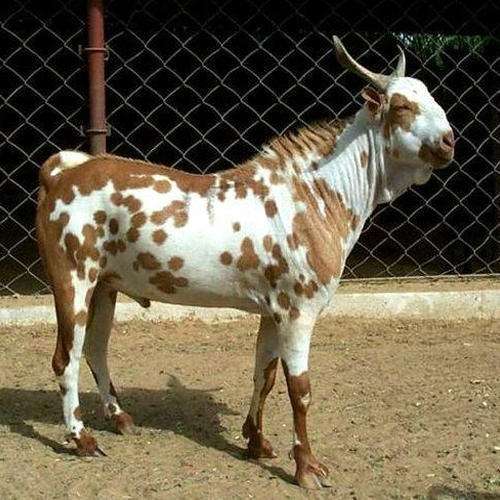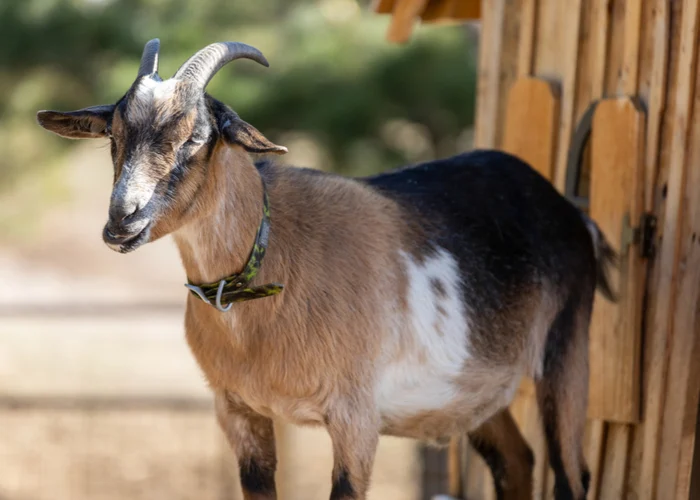
Description:
Other names for the breed include Bari, Titri Bari, Wadi Bari, Sai Bari, Thori Bari, and others. Barbari goats have distinctive traits. It has a medium-sized, compact body and is a rather little animal. They are handsome and perceptive. and, as a result of their relatively massive orbital bone, have protruding eyes. Their short, tubular, nearly double ears have an erect, upward and outward-facing slit opening in front. Bucks have thick, long beards.
Barbari does have conical teats and a well-set udder. Both bucks and does have twisted, medium-length horns that point upward and backward. The color of the coat varies greatly in barbari goats. Yet the most typical color is usually white with a few light brown patches.
Behavior:
Barbari goats are a tough and powerful breed. They typically require less administration and care. But, giving the animals more attention will help them develop normally and remain healthy.
Benefits/Uses:
The Barbari is a dual-purpose breed that is raised for both milk and meat and is well-suited to the circumstances in India. It is used for intensive farming and is a seasonal breeder. Around 107 liters of milk are produced during a lactation that lasts 150 days.
Origin/History:
The Somalian coastal city of Berbera, which is on the Indian Ocean, is where the Barbari goat derives its name. One of India’s 20 recognized breeds, the Barbari is most frequently observed in the country’s northwestern desert and semiarid regions. It is dispersed over Pakistan’s Punjab and Sindh provinces as well as the Indian states of Haryana, Punjab, and Uttar Pradesh. It has also been recorded from Vietnam, Nepal, and Mauritius. According to estimates, there are 2.4 million people in the world, practically all of them live in Pakistan.
Keeping as Pet:

- Housing
The Barbari goat breed typically requires a lot less living space because of its tiny size. If you provide them with a home space of roughly 10 square feet, they will be OK. If you decide to grow your goats in a stall-fed goat farming system, you will also need to set aside more space for play than for lodging.
Make sure your home has a proper ventilation system inside, and design it so it is simple to clean. In general, raised homes—those that are elevated above the ground—are thought to be advantageous for Barbari goat farming operations.
- Feeding
The most crucial aspect of the goat farming industry in Barbari is feeding the goats a healthy diet. As a result, strive to always provide your goats enough nourishing food. Never give them tainted or unclean feed. And always make an effort to give them access to enough clean, fresh water in accordance with your goats’ needs. As Barbari goats can be fed in stalls, they typically need more nutrient-dense foods. Specially wheat straw, berseem, barley, maize, and millet are offered as the cultivated crops for their fodder in the stall feeding system.
- Caring
In comparison to many other goat breeds, Barbari goats often require less care and management because of their smaller size. Even so, giving the animals a little more attention can assure their continued health and growth. Your goats need timely deworming and vaccinations. And if you see any symptoms of sickness, consult a veterinarian as soon as you can.
Table





